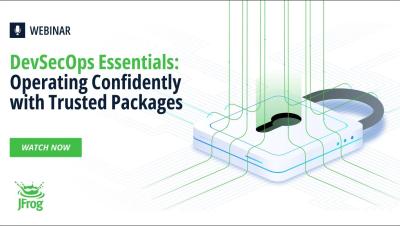#DevSecOps Essentials: Operating Confidently with Trusted Packages
Join JFrog’s Senior Solution Engineer, Mike Holland, and Technical Success Manager, Harpreet Singh, as they showcase the power of the JFrog Software Supply Chain platform. Designed to detect third-party components, track dependencies, and enforce compliance, this platform is essential for efficient and reliable software development. In this session, you'll learn.











